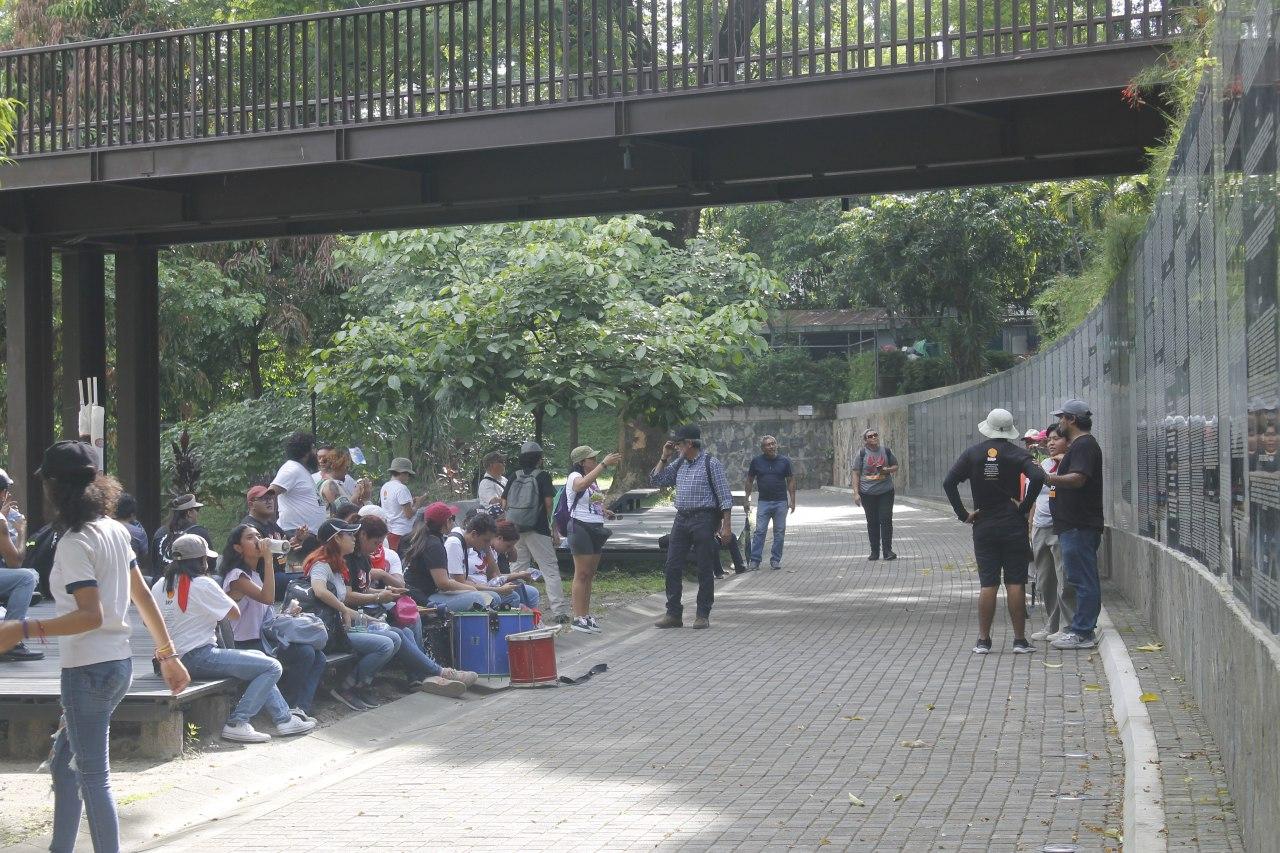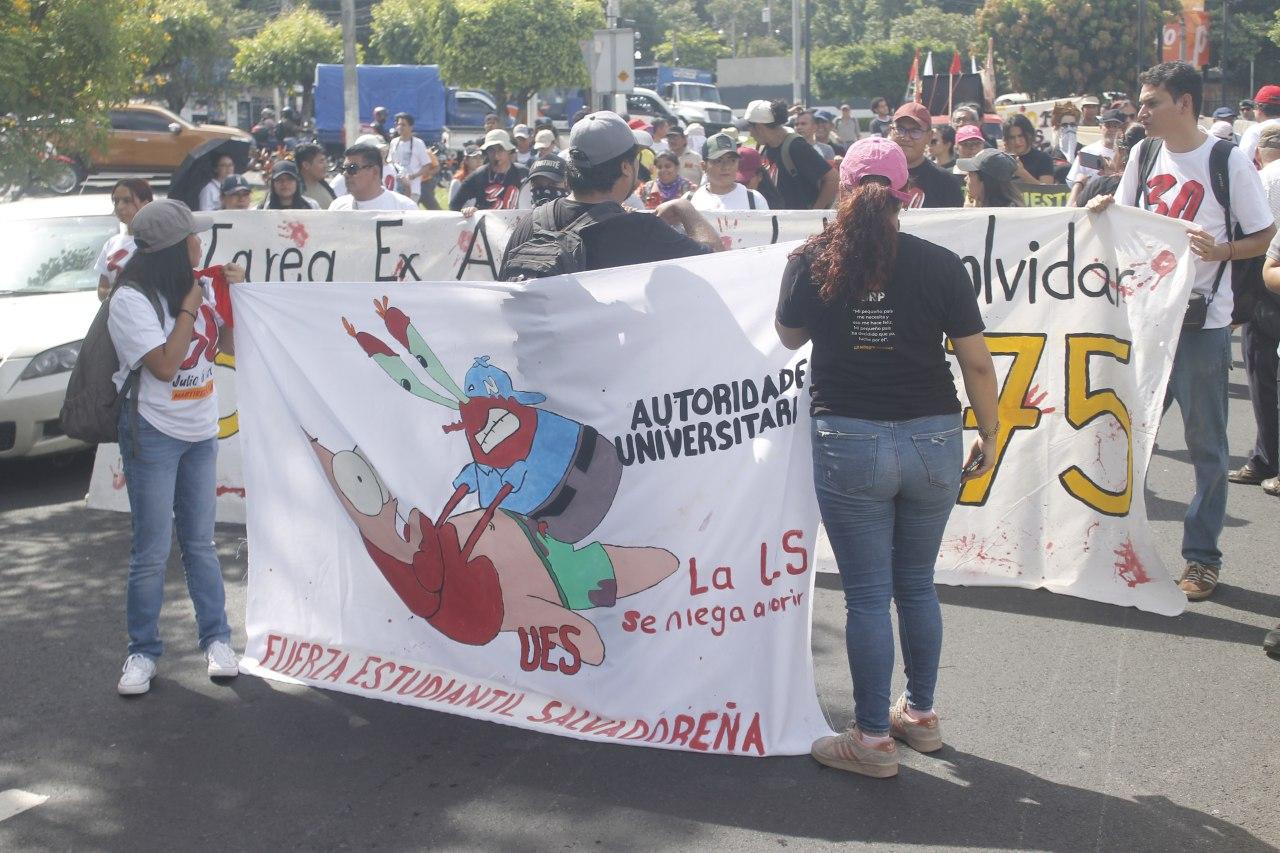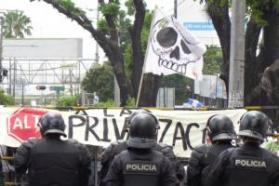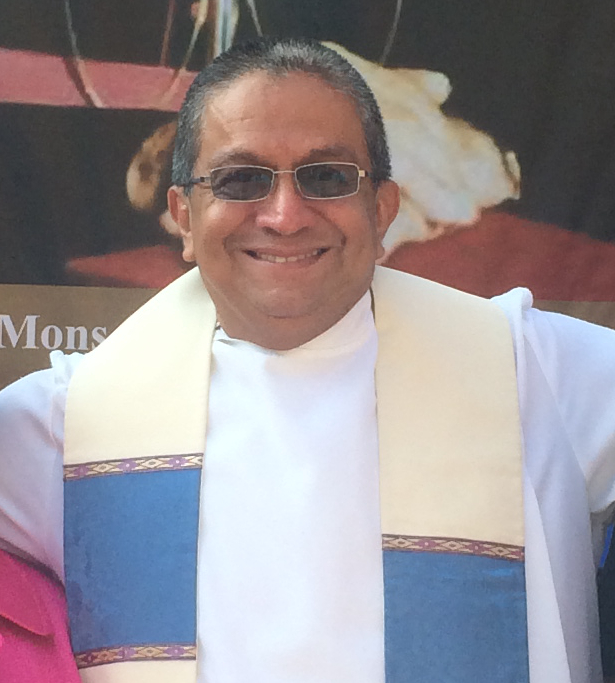Popular movements honor UES martyrs and fight for the university’s future
On Tuesday, July 30, several university student, staff, and social movement groups commemorated the 49th anniversary of a massacre that left dozens of students from the University of El Salvador (UES) dead or disappeared in 1975. The brutality of the massacre marked a turning point for the popular movement, casting greater doubt on the effectiveness of peaceful protest and the democratic process under a military government. The commemoration, which had since been a yearly tradition, well-attended by different sectors of the country’s popular movement, has dwindled dramatically in size since the university was shuttered to on-campus student life during the COVID-19 pandemic in 2020. The UES, El Salvador’s only public university, has remained largely virtual since that initial closure and the Nayib Bukele government has since failed to disburse over $52 million to the university, causing a major financial crisis for the institution.
Tuesday’s commemoration marked the second year in a row that several university student and social movement groups boycotted the university’s official commemoration march in protest of the university administration’s complicity and silence in the face of Bukele’s attacks. The official march, with large participation from the university workers union SETUES, followed the traditional route, ending at the site of the massacre. Their central demand was for the Bukele government to pay the debt it owes to the UES.
The alternative march, led by several student and faculty groups, such as the Salvadoran Student Force (FES), the University Movement for Critical Thought (MUPC), the University of El Salvador Sociology Student Association (ASESUES), the University of El Salvador Student Force (FESUES), and joined by the Popular Rebellion and Resistance Bloc (BRP) and the Movement of Victims of the Regime (MOVIR), ended at the Memory and Truth Monument, which honors the victims of massacres and disappearances committed leading up to, and during, the civil war. In addition to calling for the university debt to be paid, their demands also included calls to respect the autonomy of the UES, which is threatened by a by a bill to reform the country’s Higher Education Law, as well as for the release of all UES students arbitrarily and illegally arrested under Bukele’s State of Exception.
 Photo: Saraí Zepeda
Photo: Saraí Zepeda
This year’s marches commemorating the 1975 student massacre also takes on special significance since a prominent survivor of the massacre, Atilio Montalvo, was detained by the Bukele regime in late May, along with nine other activists from the Alliance for a Peaceful El Salvador and a grassroots journalist. Montalvo, a founder of the Farabundo Marti National Liberation Front (FMLN) and a negotiator of the 1992 Peace Accords, is in extremely delicate health following a recent heart attack and stroke. His family, as well as lawyers for some of the other detained activists, warn that they are in peril of dying in custody, due to a lack of adequate medical care.
In an interview on the YSUCA radio station on July 16, student leaders detailed the significant issues faced by the UES. Initially closed in 2020 as a result of the COVID-19 pandemic, university life remained largely virtual through 2022, despite all other establishments, such as concert venues and sports stadiums, having fully reopened long before. Since 2023, the Nayib Bukele government has used the campus for its own purposes, largely to support media spectacles, delaying a long-anticipated return to in-person classes for over four years. It took over the facilities to house athletes participating in the Central American and Caribbean Games and the Miss Universe pageant in 2023, and then again in 2024 for the ruling Nuevas Ideas party’s private purposes during the spring election season and to house visiting journalists during Bukele’s June inauguration for an unconstitutional second consecutive term.
This delay, as Marisela Ramirez explains, is an intentional move by the government to limit a historic hotbed of dissent, which has affected an entire generation of UES students. The UES has traditionally been an important space for young people to develop beyond listening to lectures. The campus environment fostered debate, creative development, and critical thinking. According to Ramirez, “The ones who have ignited the spark of rebellion, of defending the rights of the people, of the development of thought historically have been the youth, not only at the UES, but young people more broadly. So how do you inhibit that impetus, that energy, that rebelliousness, that questioning? By limiting the spaces in which young people can congregate.”
 Photo: Saraí Zepeda
Photo: Saraí Zepeda
FES Secretary-General Samuel Lopez detailed the state of disrepair that remains in multiple university buildings. “The facilities that were built for the School of Engineering and Architecture are now being used by people from the Ministry of Public Works (MOP), and those that were renovated for the School of Sciences and Humanities have supposedly been completed but have not been handed over. The ones that have been handed over, and for which there was even a ceremony to hand over the keys, were those of the School of Engineering and Architecture but, as far as we know, and from what we have seen, people from the MOP are still working on, and sleeping in, the building.”
Financial strangling
According to Ramirez, 60,000 students attend the UES, while its facilities and faculty are designed to serve half that amount. In addition, the university’s budget was cut by $7.78 million in 2024. Intensifying the crisis, the government has neglected to disburse vital funds allocated to the UES. In April, the university’s debt had reached $52 million, over 40% of its annual budget, as a result. University authorities warned mounting debts with service providers would severely hamper its basic functioning and the FES and allied organizations in the Popular Rebellion and Resistance Bloc (BRP) began holding public actions to pressure the government.
This resulted in a Ministry of Finance decision to disburse $1 million in weekly funds to the UES to begin covering the debt. However, as Ramirez points out, it did not address the continuing costs of running the university, causing the debt to rise to at least $56 million. Ramirez also states that it is unknown if the Ministry of Finance is still making the weekly payments.
Budget cuts and financial woes sharply contrast promises made, now infamously, by then-presidential candidate Nayib Bukele in 2019. During a visit to the UES, Bukele promised to expand funding and services for the university, including opening new campuses in different parts of the country. $2.5 million was assigned for the construction of campuses in the Chalatenango and Morazan departments in the 2023 budget, but neither site was built and they do not appear in the 2024 budget. As Ramirez explains, “What has happened with the UES is that it has had its budget cut, has accumulated a multi-million dollar debt, and has faced the co-opting of its facilities; in other words, the complete opposite of what was promised.”

 "I am a CISPES supporter because continuing to fight for social justice and a more people-centered country means continuing the dream and sacrifice of thousands of my fellow Salvadorans who died for that vision.” - Padre Carlos, New York City
"I am a CISPES supporter because continuing to fight for social justice and a more people-centered country means continuing the dream and sacrifice of thousands of my fellow Salvadorans who died for that vision.” - Padre Carlos, New York City

